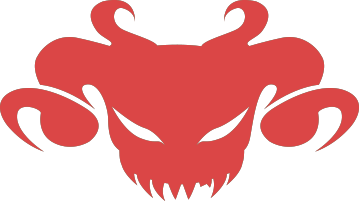Magic of the Demon Lord
The “magic” of the holiday season is rapidly receding in my rearview mirror and I’m now seeing road signs for the Kickstarter launch date, which is going to happen in about ten weeks or so. The date will firm up soon. Promise. So without wasting anymore time, let’s tackle another big chunk of the game: Magic.
The game posits that all magical things, whether spell or artifact, derive their power from the same source. A wizard riding on the back of a war turtle and spraying liquid fire from his fingertips is drawing on the same energy source as does the unhinged cultist who reads incantations from the pages of the Tome of the Nailed Tongue, the devoted healer whose touch causes wounds to close and cures disease, or the wild man of the woods who can talk to birds. Magic is magic is magic. It’s all the same thing.
Traditions
Spells and other magical bits may draw power from the same source, but they have wildly different effects. After all, compelling the bartender with a spell to give you a drink for free is a bit different from calling into existence a wall of water that wobbles a bit and then crashes down to scatter everything it strikes. To help manage the various effects spells can create, the book sorts them by game effect or theme and shoves them into categories called traditions. Spells that create or manipulate fire tend to belong to the Fire tradition. Spells that deal with demons belong to the Demonology tradition. You get the idea.
A tradition is more than a wrapper for spells, however. Traditions also provide a look at how the spells fit into the world, describes the kinds of people that learn those spells, and what an individual caster must do to cast the spell effect and what a caster must do to regain the energy required to cast the spells. As well, traditions sometimes deliver special rules that may describe consequences for learning spells from the tradition or weird effects that happen when a character casts a spell from the tradition. For example, Black Magic, Demonology, and Necromancy are all deemed dark magic since their spells tend to make the world a little worse. The desire’s end Black Magic spell detonates a creature’s “junk.” Necromancy spells create undead thralls. Demonology spells rip holes in reality to the Void so that demons can slither free. None of these traditions produce happy effects.
The current draft has 34 traditions. Each tradition has ten spells. So the current draft has 340 unique spells. The traditions that will make it into the finished product will depend on how the Kickstarter goes, though even if I can only include just a few in the core book, I can deliver the rest via future supplements.
Here’s a list of all the traditions I have designed so far:
Traditions by Attributes
Intellect Willpower
Battle Air
Black Magic Alteration
Conjuration Celestial
Demonology Death
Divination Earth
Enchantment Fire
Faerie Life
Illusion Nature
Necromancy Polymorph
Shadow Primal
Technomancy Sorcery
Telepathy Spiritualism
Teleportation Storm
Time Summoning
Wards Telekinesis
Witchcraft Theurgy
Wizardry Water

“Detonate Junk”
sniff. I’m so proud to be your friend, Rob.
Aww.
The feeling is mutual, of course 🙂
hehehe